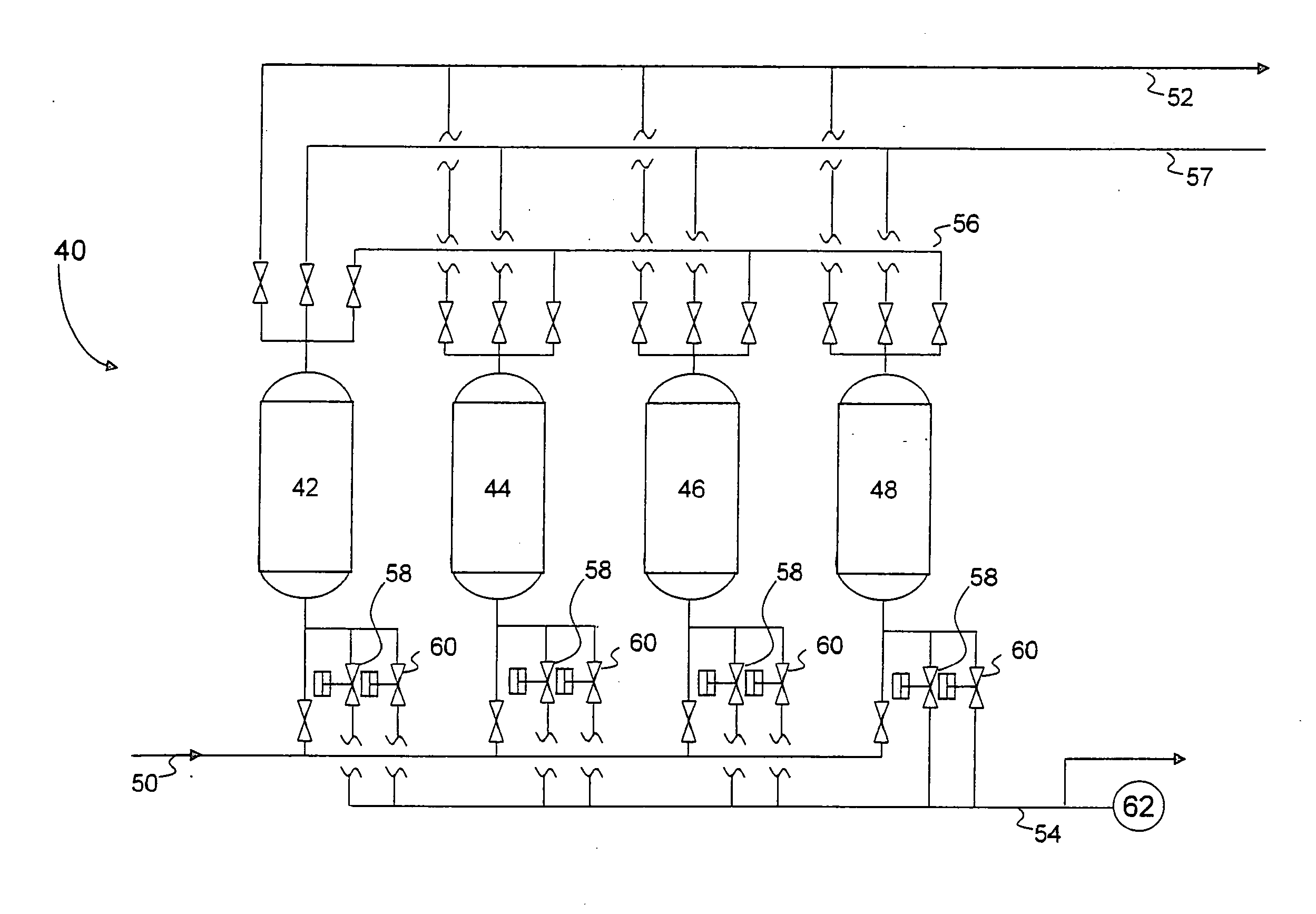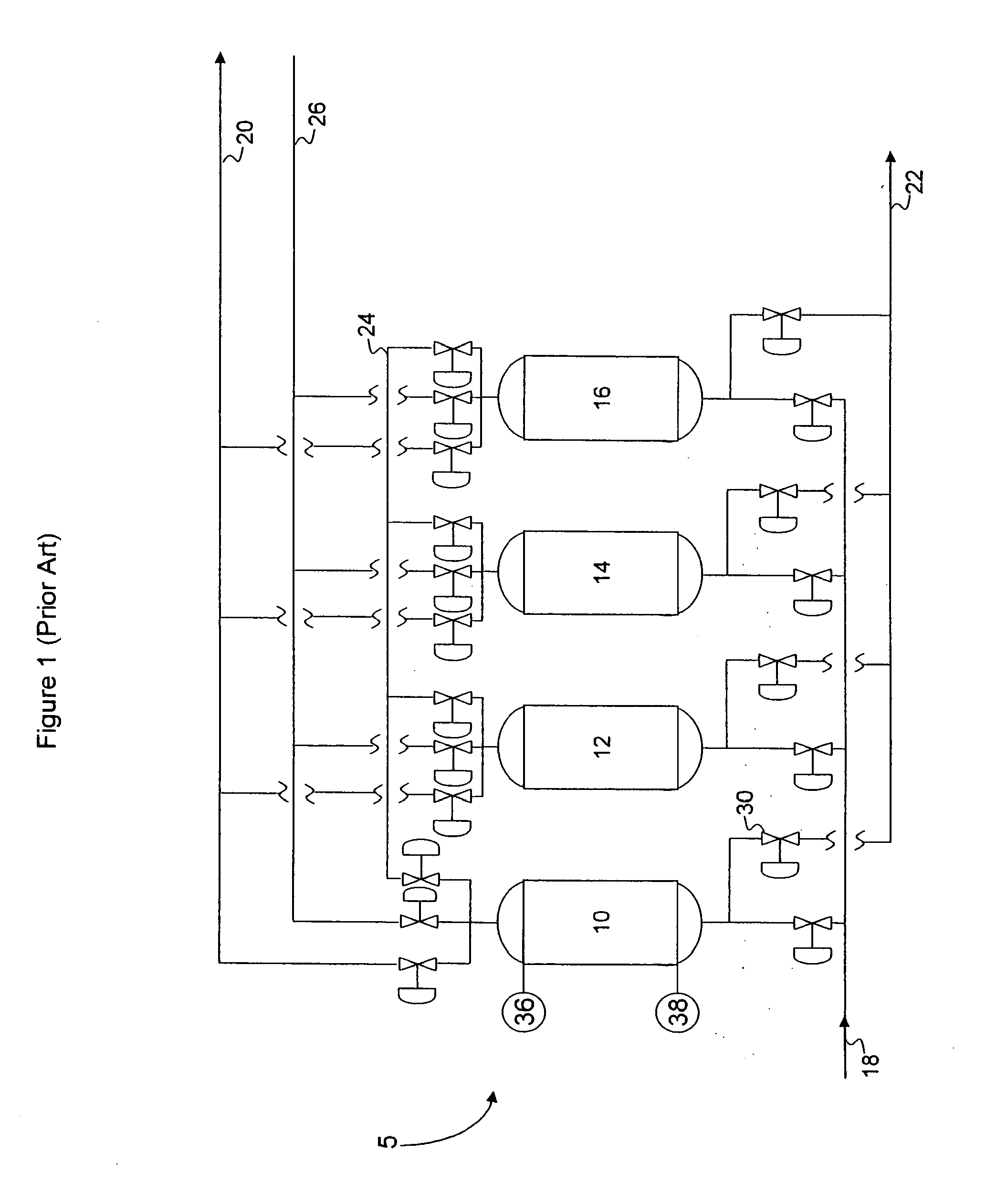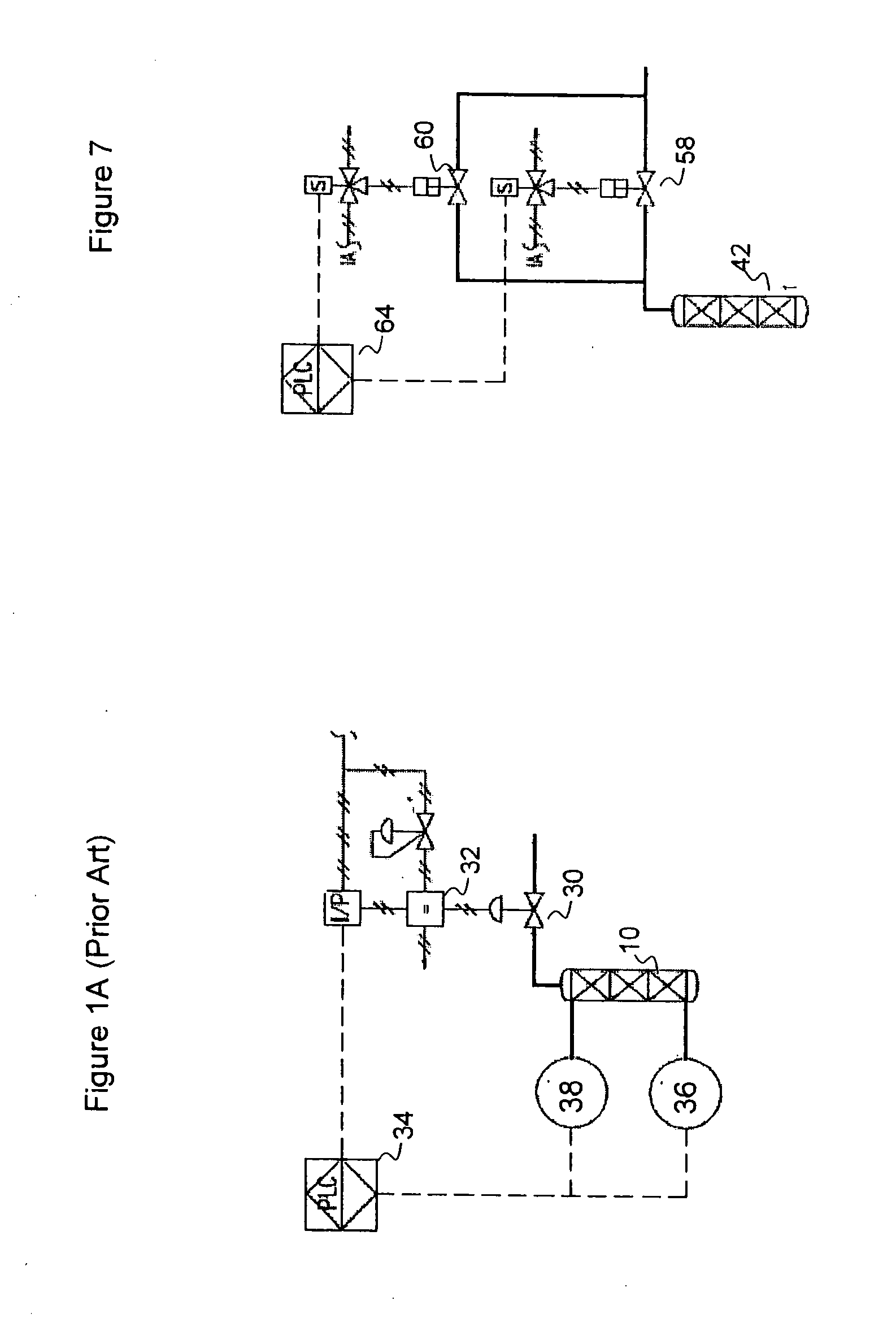Staged Blowdown of Adsorbent Bed
- Summary
- Abstract
- Description
- Claims
- Application Information
AI Technical Summary
Benefits of technology
Problems solved by technology
Method used
Image
Examples
Embodiment Construction
[0036]In one aspect, embodiments disclosed herein relate to methods and apparatus for controlling the flow of gases entering or exiting a bed of adsorbent. More specifically, embodiments disclosed herein relate to the use of two or more valves for controlling the flow of gases entering or exiting a bed of adsorbents, where the two valves are opened sequentially (i.e., in at least two actions separated by a delay in time).
[0037]Referring now to FIG. 1, a simplified process flow diagram of a prior art PSA system is illustrated. The PSA system 5 includes a first vessel 10, a second vessel 12, a third vessel 14, and a fourth vessel 16. Each of the vessels 10, 12, 14, 16 typically includes one or more beds of adsorbent material. The vessels 10, 12, 14, 16 are connected in parallel flow relation between a source manifold 18, which supplies a feed gas mixture, and a product manifold 20, which provide an outlet for unabsorbed product effluent gas. The vessels 10, 12, 14, 16 are also connect...
PUM
| Property | Measurement | Unit |
|---|---|---|
| Pressure | aaaaa | aaaaa |
| Flow rate | aaaaa | aaaaa |
| Diameter | aaaaa | aaaaa |
Abstract
Description
Claims
Application Information
 Login to View More
Login to View More - R&D
- Intellectual Property
- Life Sciences
- Materials
- Tech Scout
- Unparalleled Data Quality
- Higher Quality Content
- 60% Fewer Hallucinations
Browse by: Latest US Patents, China's latest patents, Technical Efficacy Thesaurus, Application Domain, Technology Topic, Popular Technical Reports.
© 2025 PatSnap. All rights reserved.Legal|Privacy policy|Modern Slavery Act Transparency Statement|Sitemap|About US| Contact US: help@patsnap.com



